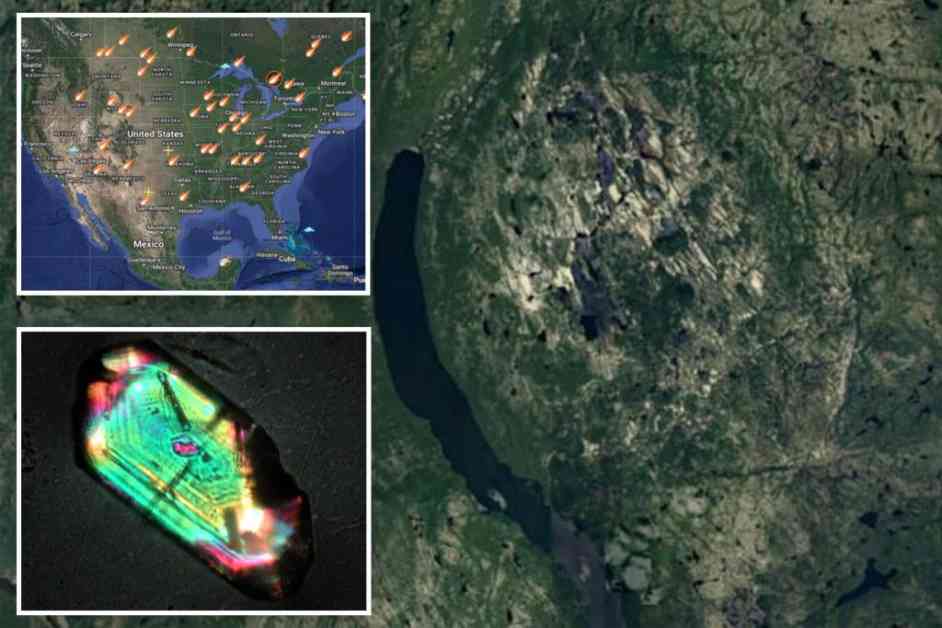In a fascinating discovery, a Canadian man stumbled upon what experts believe to be a massive meteor crater while researching a camping trip using Google Maps. Joël Lapointe, from Quebec, spotted the mysterious, approximately nine-mile-wide pit in the Côte-Nord region of true north while using the app’s satellite image feature.
Intrigued by his findings, Lapointe shared his discovery with geophysicist Pierre Rochette, who stated that the crater, surrounded by a small mountain ring, is highly indicative of an impact site. Rochette found a mineral called zircon in samples collected from the area, which is consistent with meteor impacts.
Although further studies are needed, Rochette emphasized that Lapointe may have stumbled upon a significant finding. If confirmed, the site has the potential to provide valuable insights into Earth’s connection with the universe, according to Tara Hayden from Western University’s Earth Sciences department. Hayden suggested that the deposit could be from an ancient planet or material from the solar system.
Gordon Osinski, another expert, highlighted the role of modern mapping tools in enabling both amateur and professional researchers to make such discoveries. Osinski mentioned that many geologists are using online platforms to identify circular or semi-circular structures, although most turn out not to be craters.
Interestingly, Canada is home to a significant number of discovered meteor craters, with Osinski and his team planning a field trip to the remote location to learn more about the newly found site. Osinski expressed his excitement about the discovery, noting that only 200 craters have been identified worldwide, with 31 of them located in Canada.
This discovery highlights the power of technology and citizen science in uncovering hidden gems on Earth. As more individuals engage in online exploration, the potential for new discoveries, like Lapointe’s meteor crater, continues to grow. The collaboration between amateur enthusiasts and expert scientists underscores the importance of community involvement in advancing our understanding of the natural world.
It is truly remarkable how a simple Google Maps search for a camping trip led to the unearthing of a potential meteor crater, shedding light on our planet’s fascinating history and connection to the cosmos. As researchers continue to investigate this intriguing site, the possibilities for new revelations and scientific breakthroughs seem endless.












